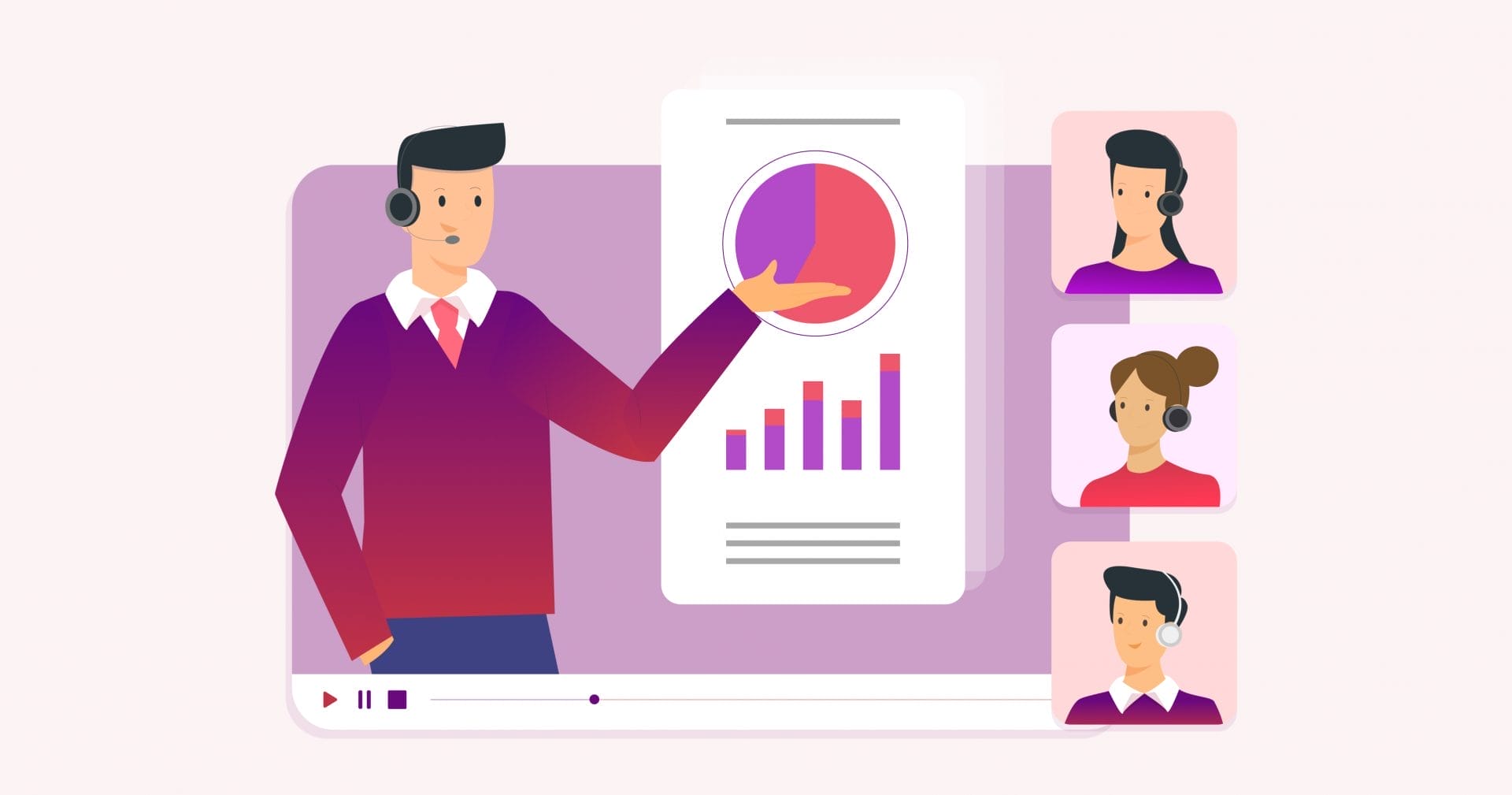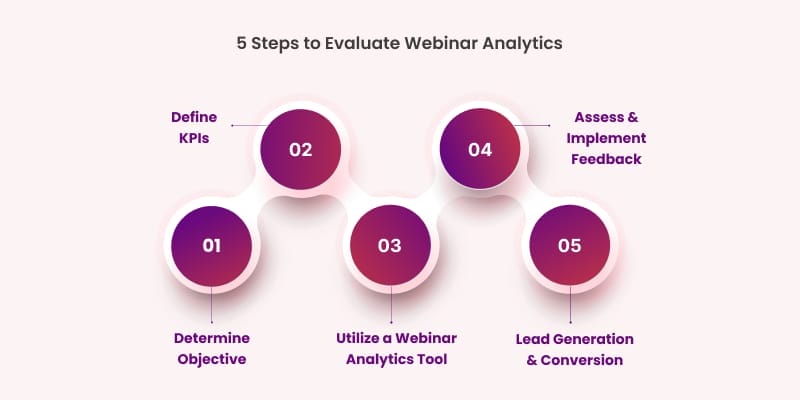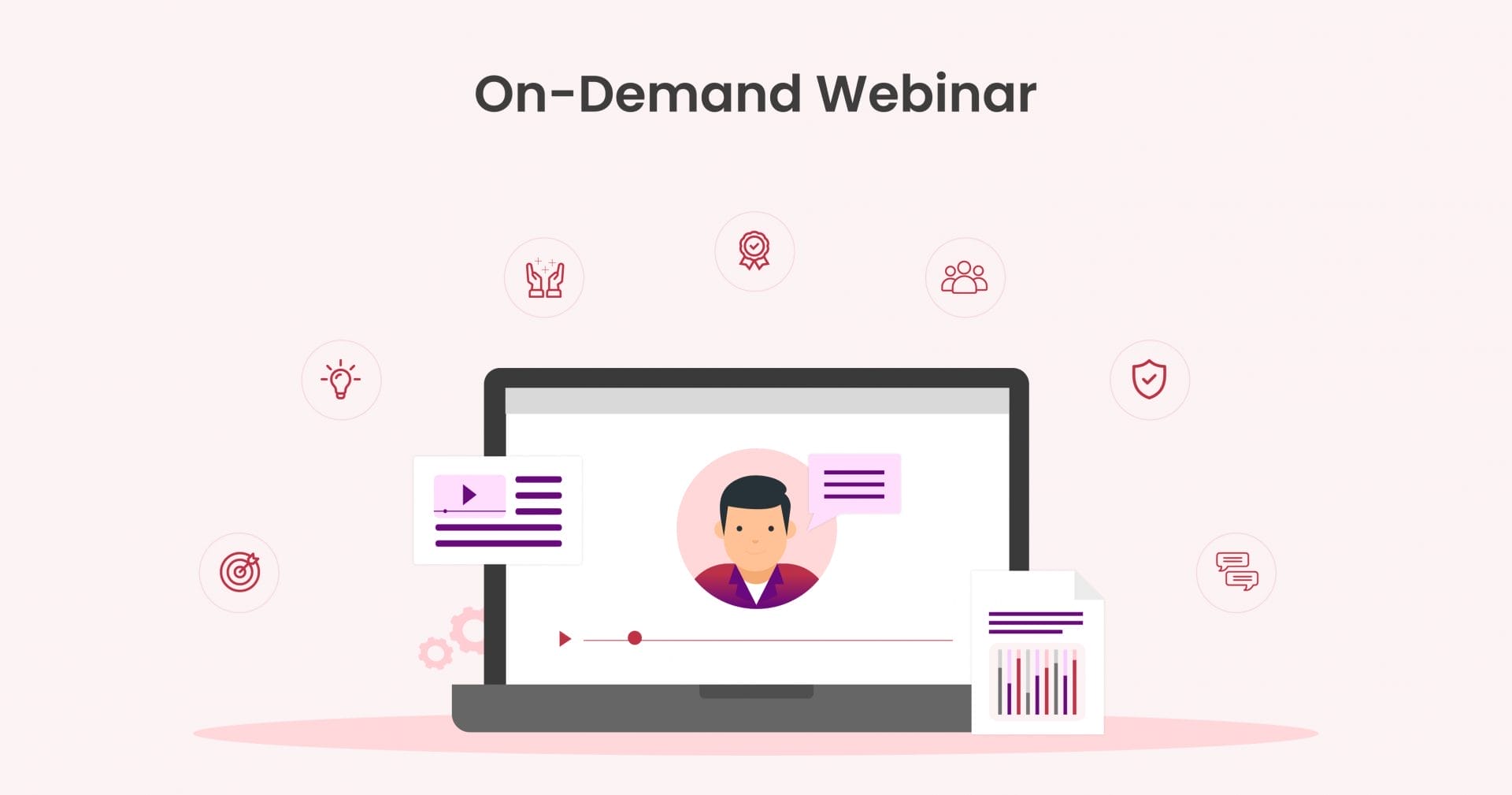Most organizations conduct webinars, but they don’t bother to analyze their effectiveness. Analyzing webinar performance is crucial to driving immense success.
Providing you insights about improvements, webinar analytics helps you drive more engagement and conversions.
Tracking analytics closely is essential for checking your webinar success, as it provides exclusive insights about your audience’s engagement with your webinars.
Looking into analytics helps you modify and redefine your webinar strategy to boost user engagement and conversion and ultimately increase ROI.
Let’s get started with exploring the crucial aspects of webinar analytics!
What is Webinar Analytics? – An Overview
Webinar analytics involves collecting, measuring, and analyzing data related to webinars. Advanced analytics metrics access the data and provide insights about the webinar’s performance.
Analytics empowers your upcoming webinars and improves marketing strategies by allowing you to make data-driven decisions.
Most webinar analytics tools provide insights in visual form so that they are easy for users to understand. Based on the insights, you can develop a robust marketing strategy for the post-webinar stage, where you define activities that convert the participants into customers.
Why Do Organizations Need Webinar Analytics?
1. Make Informed Decisions
With the insights a webinar analytics provides, you can make the correct and timely decisions. It helps you understand your target audience’s preferences and behavior by sharing details on
- Which topics are most preferred and loved by the audience?
- What time is suitable for most of the participants?
- When do the attendees tend to drop the webinar?
- What type of topics/information encourage them to initiate interaction with the host? and more
Interpreting these insights, you can redefine your webinar strategy for the future.
2. Improved Webinar ROI (Return on Investment)
The ultimate objective of any business is to increase ROI.
Organizations invest in different activities to boost the bottom line.
It applies to webinars, too.
Organizations invest a considerable amount of time, effort, and money in various aspects related to webinars which could be
- Technical (investing in new software, multiple integrations, and more)
- Non-technical (content research, ideation, creation, and designing)
Using webinar analytics, organizations can check the return on their investment. After the completion of the webinar, they can analyze what they have achieved as output which could be
- Customer Acquisitions
- Lead Generation and Nurturing
- Brand Awareness
With these insights, you can redefine the client acquisition strategy to increase the number of clients and eventually boost revenue.
3. Continuous Improvement
A feature-rich webinar analytics significantly enhances the effectiveness and potential of the webinar process, enabling better results.
It assesses the data and provides clarity on your webinar’s strengths and weaknesses. Understand the gaps and perform the necessary groundwork to understand audience preferences and meet their expectations.
For example, you analyzed the data of your last five webinars and observed that user engagement drops at a certain point. It indicates that you should improve your content or change the delivery method.
Continuous improvement is the only way to create a high-quality webinar experience that your target audience expects.
4. Optimized Engagement
Track the participants’ involvement during the webinar. It will help you gain insight into what keeps the audience engaged.
33% of marketers prioritize using interactive tools while hosting a webinar. – Marketing Impact Report
By tracking the webinar analytics closely, you can get numbers on
- New participants
- Repeated attendees
- People who did not join the webinar
- People who have interacted (Chats & Polls)
- People who left early
- People who watched the replay
- People who have watched the entire webinar (From start to end)
- Where attendance dropped off
- Which parts of the webinar were most engaging for the audience
Based on the insights related to the target audience, you need to adjust your upcoming webinars accordingly to enhance user engagement.
5. Audience Understanding
For a webinar to succeed, it is essential to understand the demographics and preferences of the audience.
With the help of webinar analytics, you understand your target audience and create webinar content based on their requirements, preferences, and expectations.
When the audience finds your webinar relevant, you can experience a significant increase in webinar registration and attendance.
Key Metrics that Brands Should Consider to Check the Success of Webinars
To measure the success of your webinar, you need to consider the essential metrics listed below.
- Email Open and Click Rates
- Registration Rate
- Attendance Rate
- Engagement Level
- Brand Awareness and Impact
- Conversion Rate
- Cost and Revenue
- Audience Feedback
- Reach and Relevance
Read Also: Essential Webinar Kpis and Metrics
How to Evaluate Webinar Analytics? 5 Proven Steps
Analysis is essential for evaluating the success of your webinar. It helps you identify areas for improvement and design the webinar strategy accordingly.
Boost your webinar performance with data-driven and well-informed decisions by unleashing the power of webinar analytics.
Check out the five steps that guide you on how you can access webinar analytics.
Step 1: Determine Objective
Define your webinar goals during the pre-webinar preparations.
For example, if you are planning a webinar for lead generation, set the goal of obtaining at least 70 leads through webinar registration.
Based on your goals, create a strategy and evaluate the success after completing the webinar.
Step 2: Define KPIs
Choose the right set of metrics that helps you track your goals. However, the most common webinar metrics are registration, attendance, engagement, and conversion rates.
For example, if you want to increase brand awareness through a webinar, then you probably set goals to boost social media presence and website visits up to a certain percentage and set KPIs to measure these goals.
Combining your objectives with KPIs provides a precise framework to assess your webinar data.
Step 3: Utilize a Webinar Analytics Tool
Most webinar platforms, like WebinarPress, offer analytics capabilities. The platforms provide registration, attendance, engagement, and other relevant metrics data.
WebinarPress provides automated tagging & emailing for all the registered users based on their behavior. Brands can pre-define tags for all types of registrants, such as
- Registered for the webinar
- Attended the webinar
- Missed the webinar
- Watched full webinar
- Left early
- Watched replay
- Interacted (polls, questions, & chat)
You can integrate WebinarPress with your CRM and email platforms to perform post-webinar email marketing. WebinarPress automatically sends the user behavior data with the respective tagging to CRM, and from CRM to email platform.
It ensures the audience gets the right email as per their behavior in the webinar attendance funnel.
For example,
- If someone registers for the webinar but misses attending it, then he/she will receive an email with a webinar link to replay/watch it.
- If someone interacts on a particular point during the webinar, he/she will receive an email with information about that point and the webinar link.
This automation streamlines post-webinar marketing efforts for the organizations and reduces the complexity of the task.
Step 4: Assess & Implement Feedback
Metrics help you understand webinars’ effectiveness. However, you should conduct a feedback survey with your attendees to check the success rate. It will help you understand what they liked and did not like in your webinar. They will share their experience with speakers, presentations, content, etc.
Based on the participants ‘ feedback, you can improve your content strategy and approach to presenting and conducting a webinar.
Step 5: Lead Generation & Conversion
You must check how many leads and customers you have earned from the webinar. Continue with marketing activities to convert the leads into customers.
By thoroughly assessing the webinar, you can redefine your approach, improve engagement, and drive better outcomes for upcoming webinars.
WebinarPress: Get Access to Robust Webinar Analytics
WebinarPress is an advanced webinar platform that allows brands to run their on-demand, automated, and live-streaming webinars seamlessly. Containing advanced metrics, it facilitates the companies with a better understanding of the target audience.
Harnessing WebinarPress’s potential can help you gain invaluable insights into participants’ behavior, engagement rate, and overall webinar effectiveness. It can also refine your content delivery, improve interaction, and ultimately drive better results.
Whether you’re looking to enhance participant retention or analyze the success of your presentations, WebinarPress provides the tools you need for comprehensive webinar analysis.
Ready to take your webinars to the next level?
Talk to an expert today and unlock the full potential of your online events!





